Complete Solutions to Exercise of chapter WORK POWER AND ENERGY of Class 11 book with complete answers and questions
| Class 11 | PHYSICS |
| Chapter | WORK POWER AND ENERGY |
| RESONANCE | Exercise |
| Number Of Questions | 37 |
| Academic Year | 2023-24 |
An object is moving along a straight line path from P to Q under the action of a force `vec(F)=(4 hati-3hatj+hat2k)N`. If the co-ordinate of P and Q in meters are (3,2,-1) and (2,-1,4) respectively. Then the work done by the force is
View SolutionA bucket tied to a string is lowered at a constant acceleration of `g//4`. If mass of the bucket is m and it is lowered by a distance `l` then find the work done by the string on the bucket.
View SolutionThe block of mass `m` initially at `x=0` is acted upon by a horizontal force at any position `x` is given as `F =a-bx^(2)(` where `a gt mu mg)`, as shown in the figure. The co`-` efficient of friction between the surface of contact is `mu`. The net work done on the block is zero, if the block travels a distance of `......................`
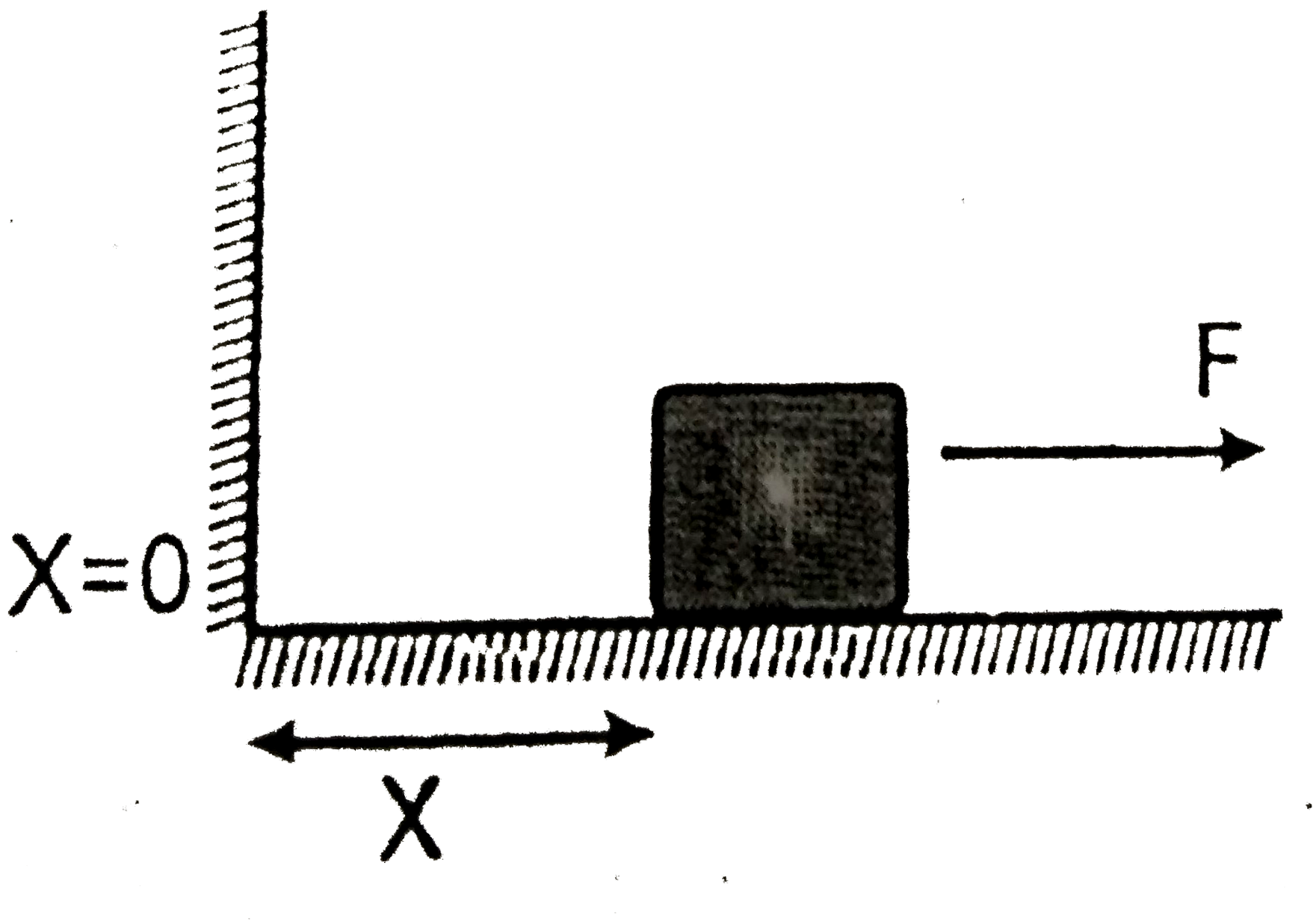
View SolutionThe work done by the force `= vec F = A (y^(2) hati + 2 x^(2) hatj)`, where A is a constant and x and y are in meters around the path shown is.
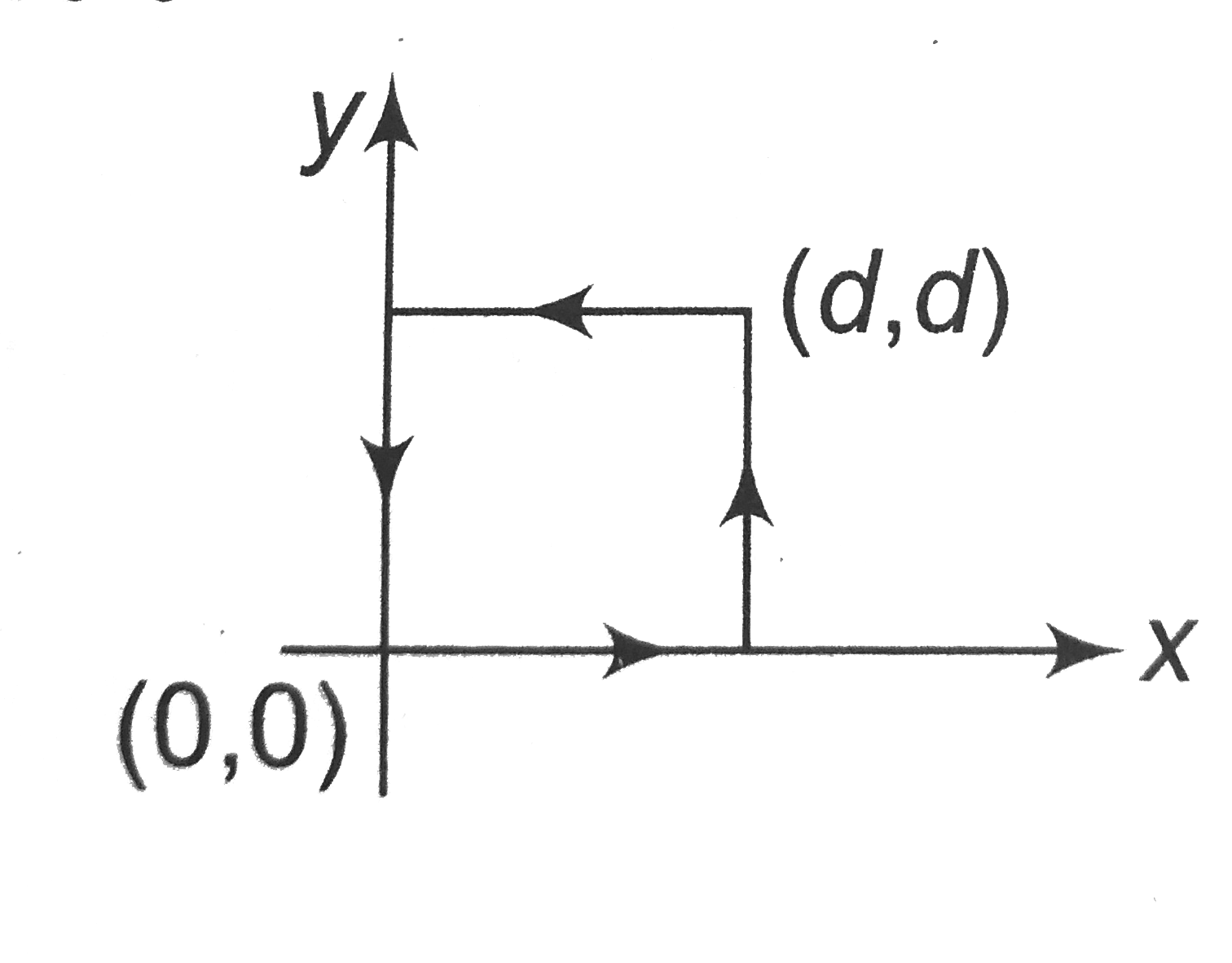
View SolutionA chain is held on a frictionless talbe with `L//4` hanging over. Knowing total mass of the chain is `M` and total length is `L`, the work required to slowly pull hanging part back to the table is `:`
View SolutionA particle of mass m moving along a straight line experiences force F which varies with the distance x travelled as shown in the figure. If the velocity of the particle at `x_(0)` is `sqrt((2F_(0)x_(0))/m)`, then velocity at `4x_(0)` is
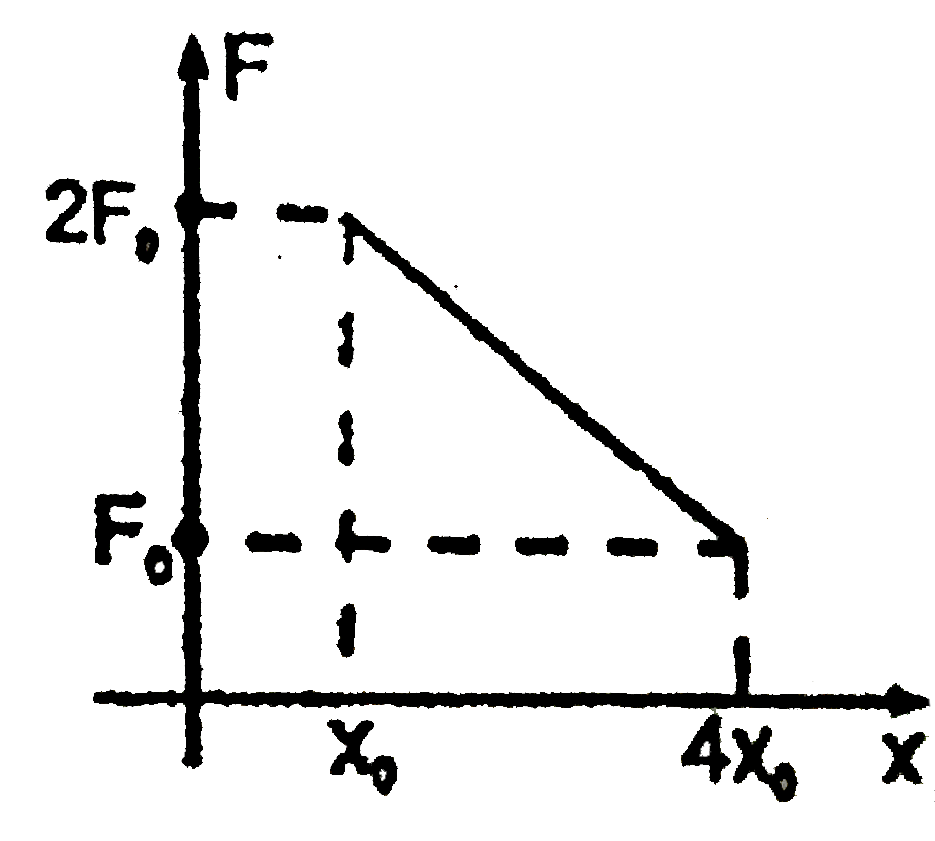
View SolutionWhich of the following statements is not true?
View SolutionIn figure, the ball A is released from rest, when the spring is at its natural (unstretched) length. For the block B of mass M to leave contact with ground at some stage, the minimum mass of A must be
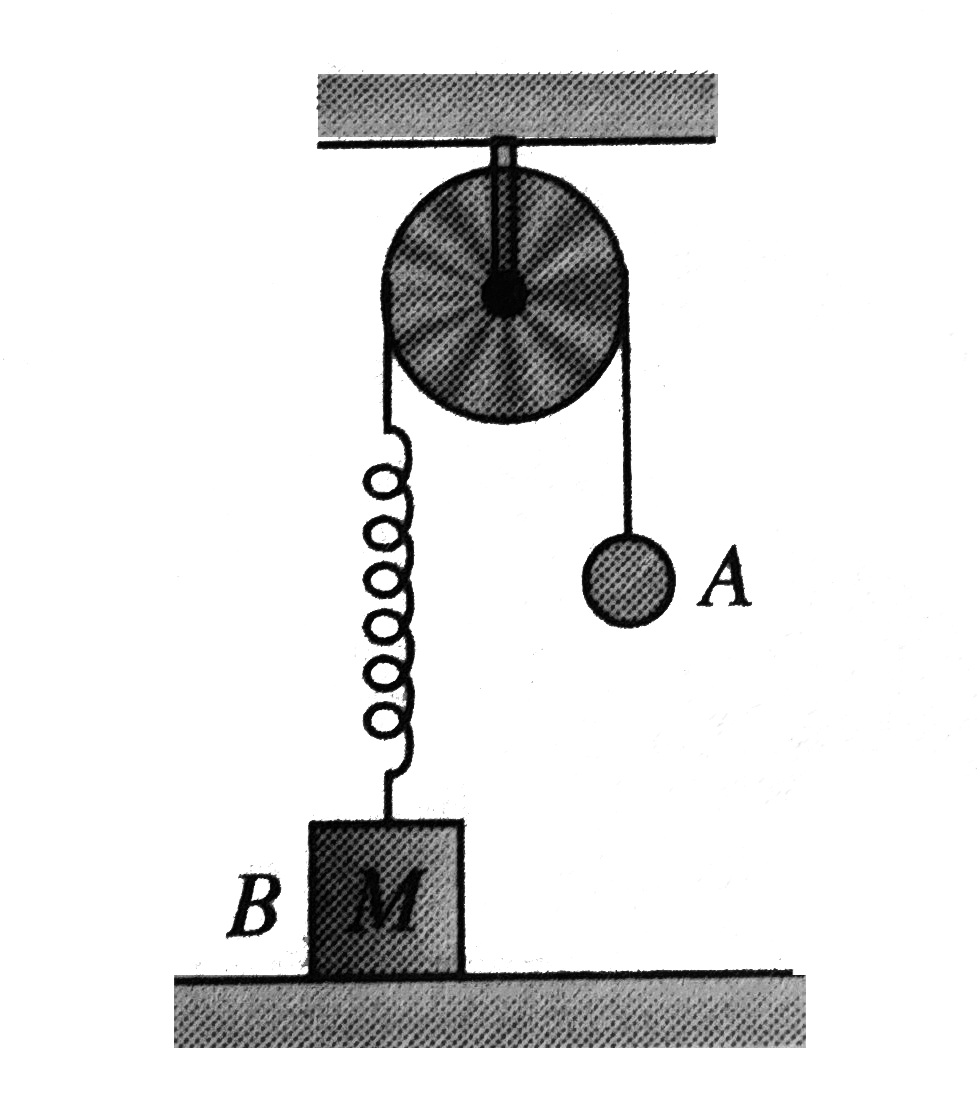
View SolutionIn the figure shown initial spring is in unstretched state and blocks are at rest. Now `100 N` force is applied on block `A and B` as shown in figure. After same time velocity of 'a' becomes `2 m//s` and that of 'B' `4 m//s` and block A displaced by amount `10 cm` and spring is spring is streched by amount `30 cm`. Then work done by spring force on `A` will be:
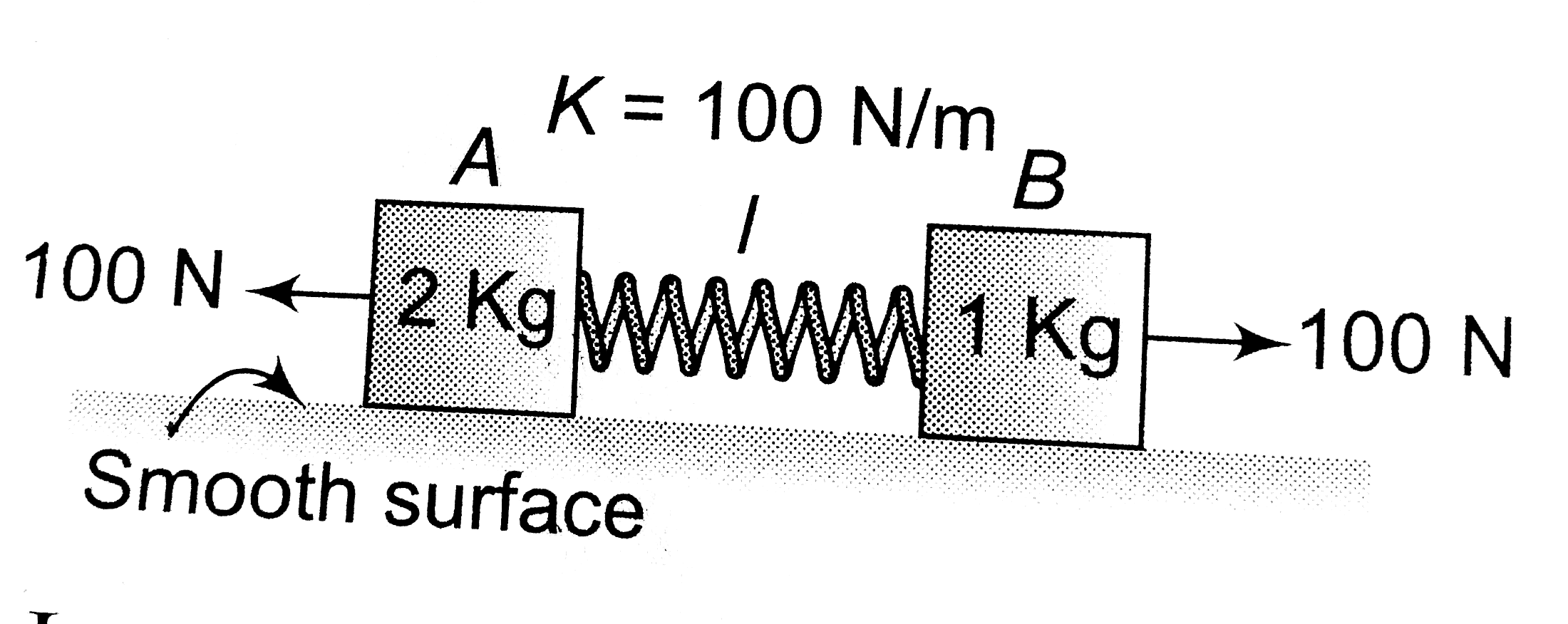
View SolutionA block attached to a spring, pulled by a constant horizontal force, is kept on a smooth surface as shown in the figure. Initially, the spring is in the natural state. Then the maximum positive work that the applied force F can do is [Given that spring does not break]
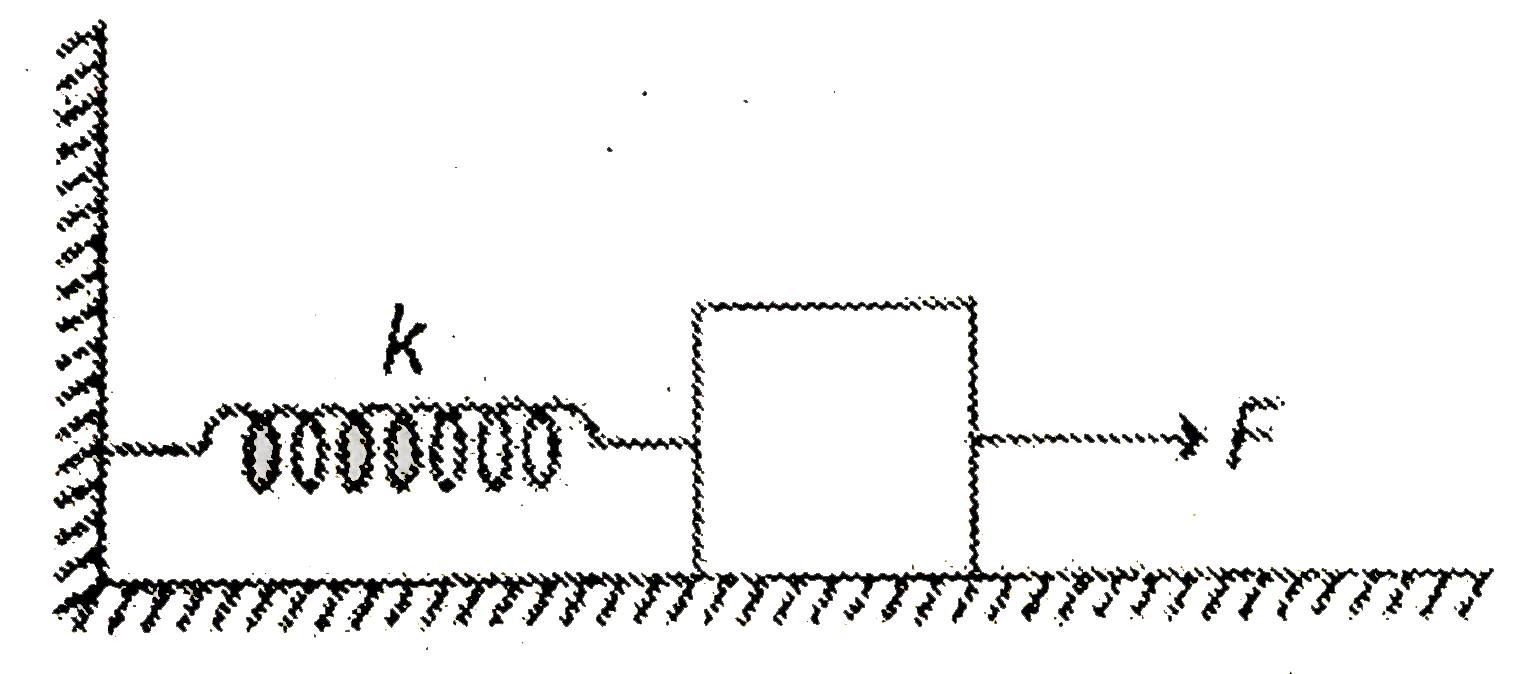
View SolutionA body is projected with kinetic energy k at angle `phi` with the vertical. Neglecting friction, its potential energy at the highest point will be
View SolutionA man places a chain (of mass `m` and length `l`) on a table slowly. Initially, the lower end of the chain just touches the table. The main brings down the chain by length `l//2`. Work done by the man in this process is
View SolutionPower supplied to a mass `2 kg` varies with time as `P = (3t^(2))/(2)` watt. Here `t` is in second . If velocity of particle at `t = 0 is v = 0`, the velocity of particle at time `t = 2s` will be:
View SolutionA constant power `P` is applied to a particle of mass `m`. The distance traveled by the particle when its velocity increases from `v_(1)` to `v_(2)` is (neglect friction):
View SolutionThe force acting on a body is inversely proportional to the distance (x) covered. The work done is proportional to
View SolutionThe graph between the resistance force F acting on a body and the distance covered by the body is shown in the figure. The mass of the body is 25kg and initial velocity is `2 m//s^(2)`. When the distance covered by the body is 4m, its kinetic energy would be
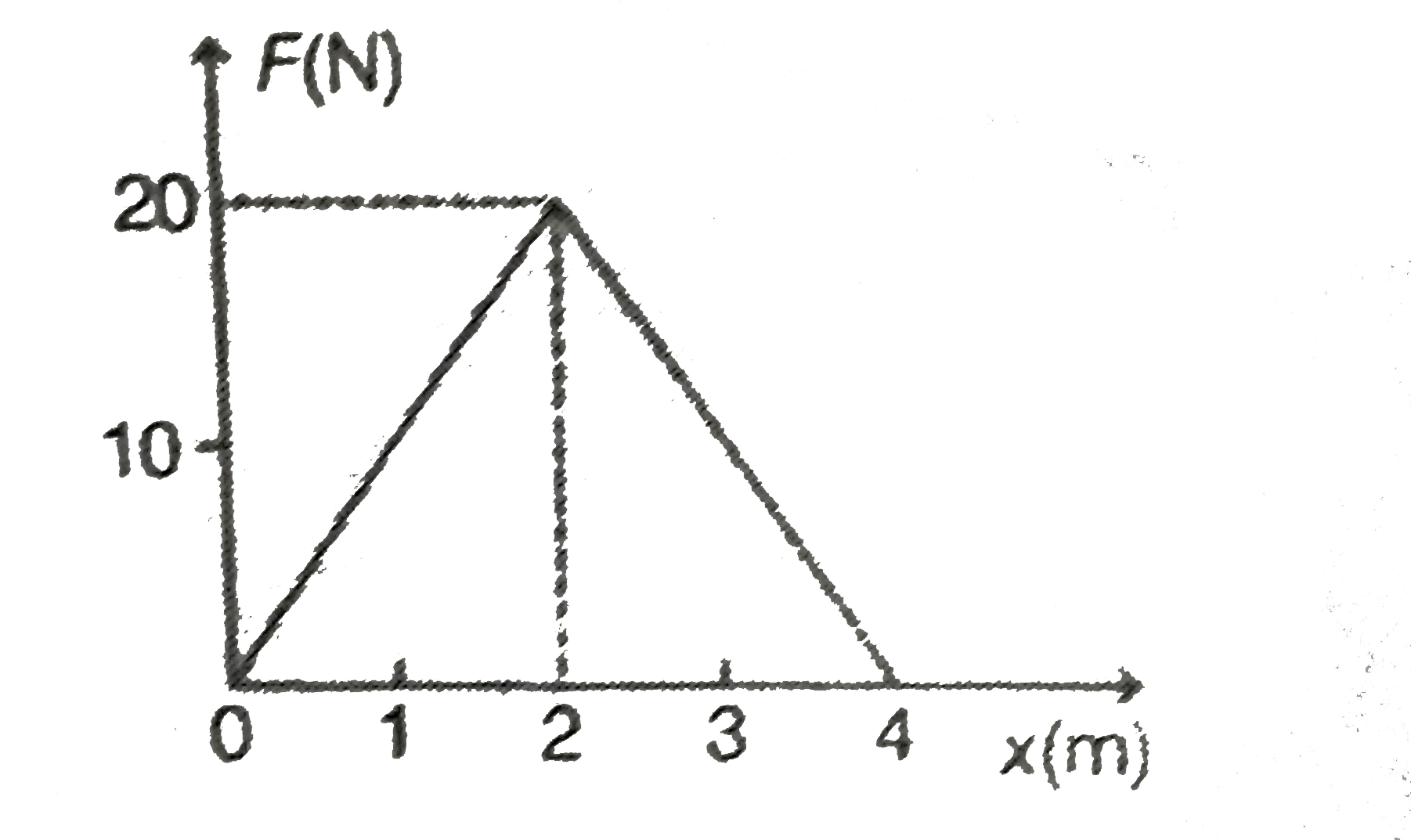
View SolutionA particle moves in a straight line with retardation proportional to its displacement. Its loss of kinetic energy for any displacement x is proportional to:
View SolutionA body is falling under gravity . When it loses a gravitational potential energy `U`, its speed is `v`. The mass of the body shell be
View SolutionA block of mass m is attached to two unstretched springs of spring constants `k_1 and k_2` as shown in figure. The block is displaced towards right through a distance x and is released. Find the speed of the block as it passes through the mean position shown.
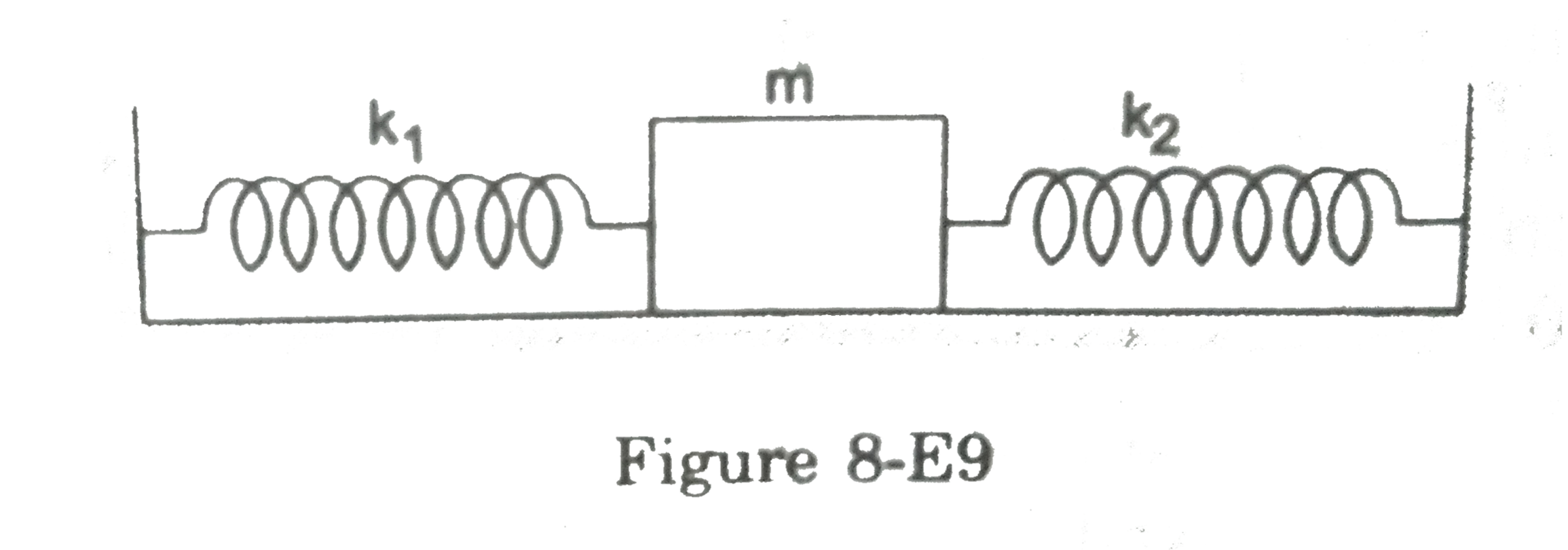
View SolutionA body of mass m dropped from a certain height strikes a light vertical fixed spring of stiffness k. The height of its fall before touching the spring if the maximum compression of the spring is equal to `(3mg)/(k)` is
View SolutionA particle moves with a velocity `5hati-3hatj+6hatk ms^(-1)` under the influence of a constant force F=10hati+10hatj+20hatk N. The instantaneous power applied to the particle is
View SolutionAn electric motor creates a tension of `4500` newton in a hoisting cable and reels it at the rate of `2 m//s`. What is the power of the motor ?
View SolutionThe potential energy of a partical veries with distance `x` as shown in the graph.
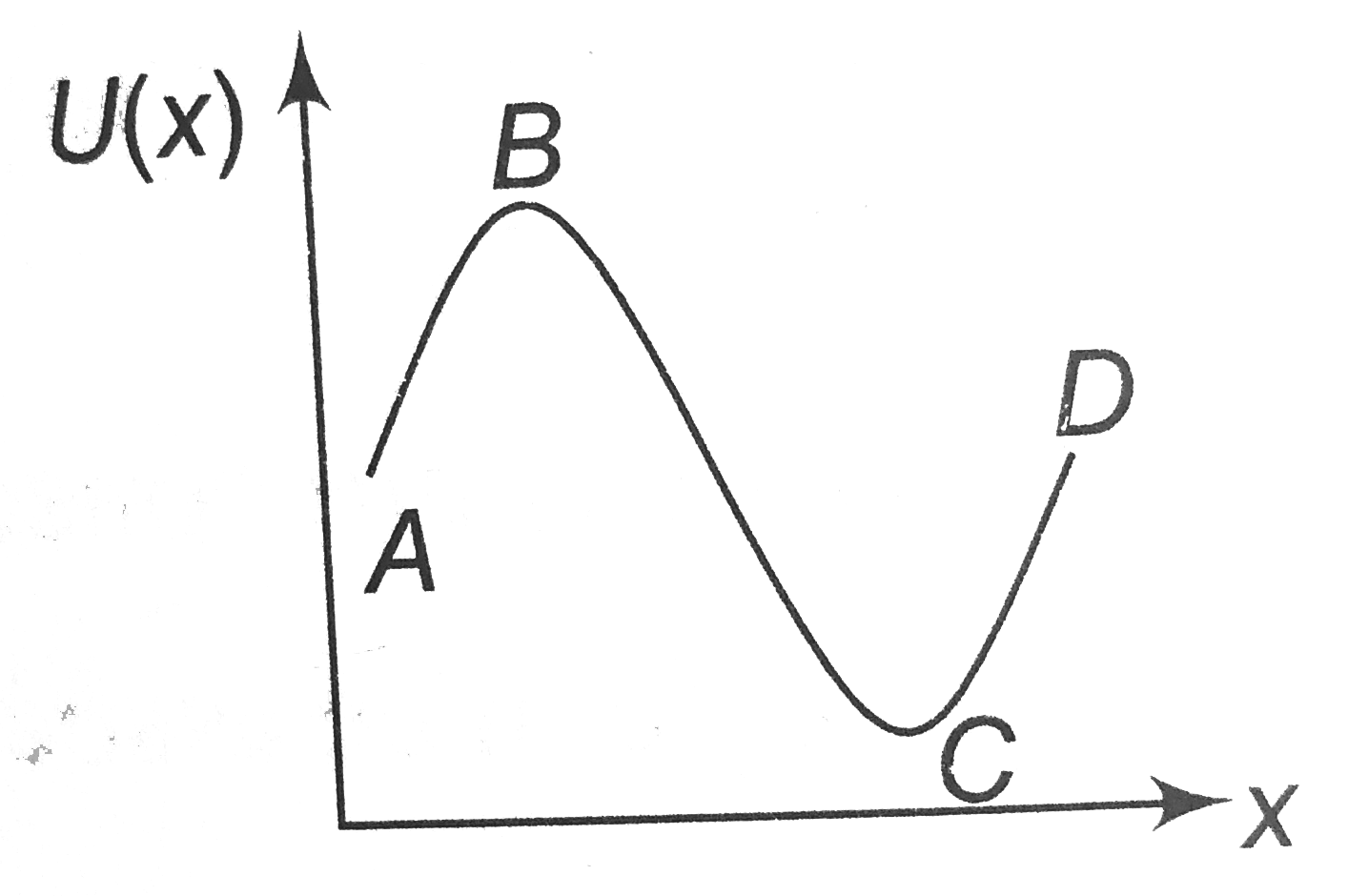
The force acting on the partical is zero at
View SolutionThe potential energy of a force filed `vec(F)` is given by `U(x,y)=sin(x+y)`. The force acting on the particle of mass m at `(0,(pi)/4)` is
View SolutionA spring of force constant 800 `Nm^(-1)` has an extension of 5 cm. The work done in extending it from 5 cm to 15 cn is
View SolutionA body is moved along a straight line by a machine delivering constant power. The distance moved by the body in time t is proportional to
View SolutionThe total work done on a particle is equal to the change in its mechanical energy
View SolutionA ring of mass m can slide over a smooth vertical rod. The ring is connected to a spring of force constant `K=(4mg)/R` where 2R is the natural length of the spring. The other end spring is fixed to the ground at a horizontal distance 2R from the base of the rod. the mass is released at a height of 1.5 R from ground.
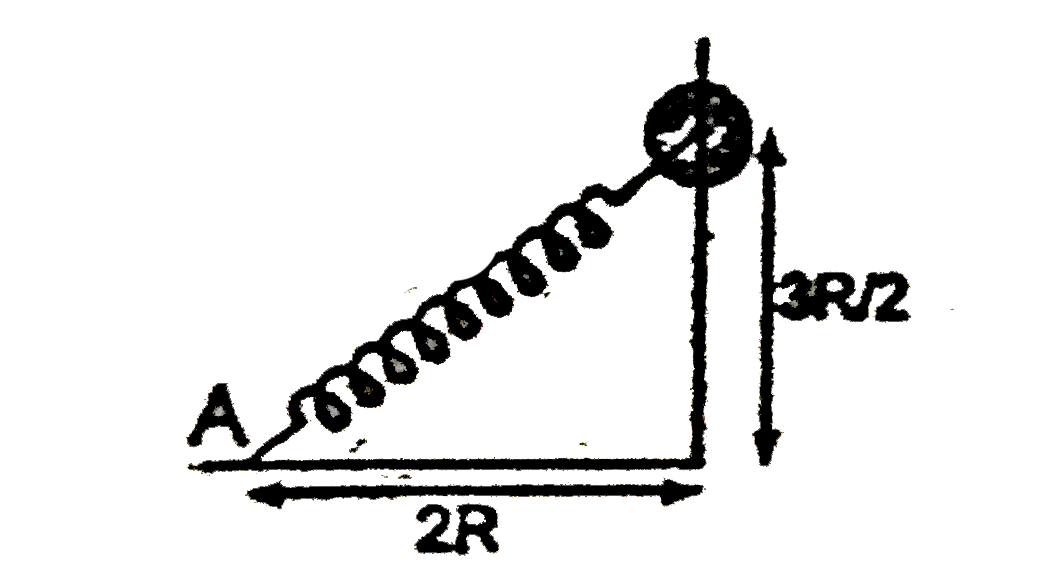
View SolutionThe kinetic energy of a particle continuously increases with time. Then
View SolutionIf force is always parallel to motion
View SolutionThe given plot shows the variation of U, the potential energy of interation between two particles, with the distance separating them, `r`.
1. B and D are equilibrium points.
2. C is point of stable equilibrium.
3. The force of interaction between the two particles is attractive between points C and B, and repulsive between pionts D and E on the curve.
4. The force of interaction between the particle is repulsive between points C and A.
Which of the above statements are correct?
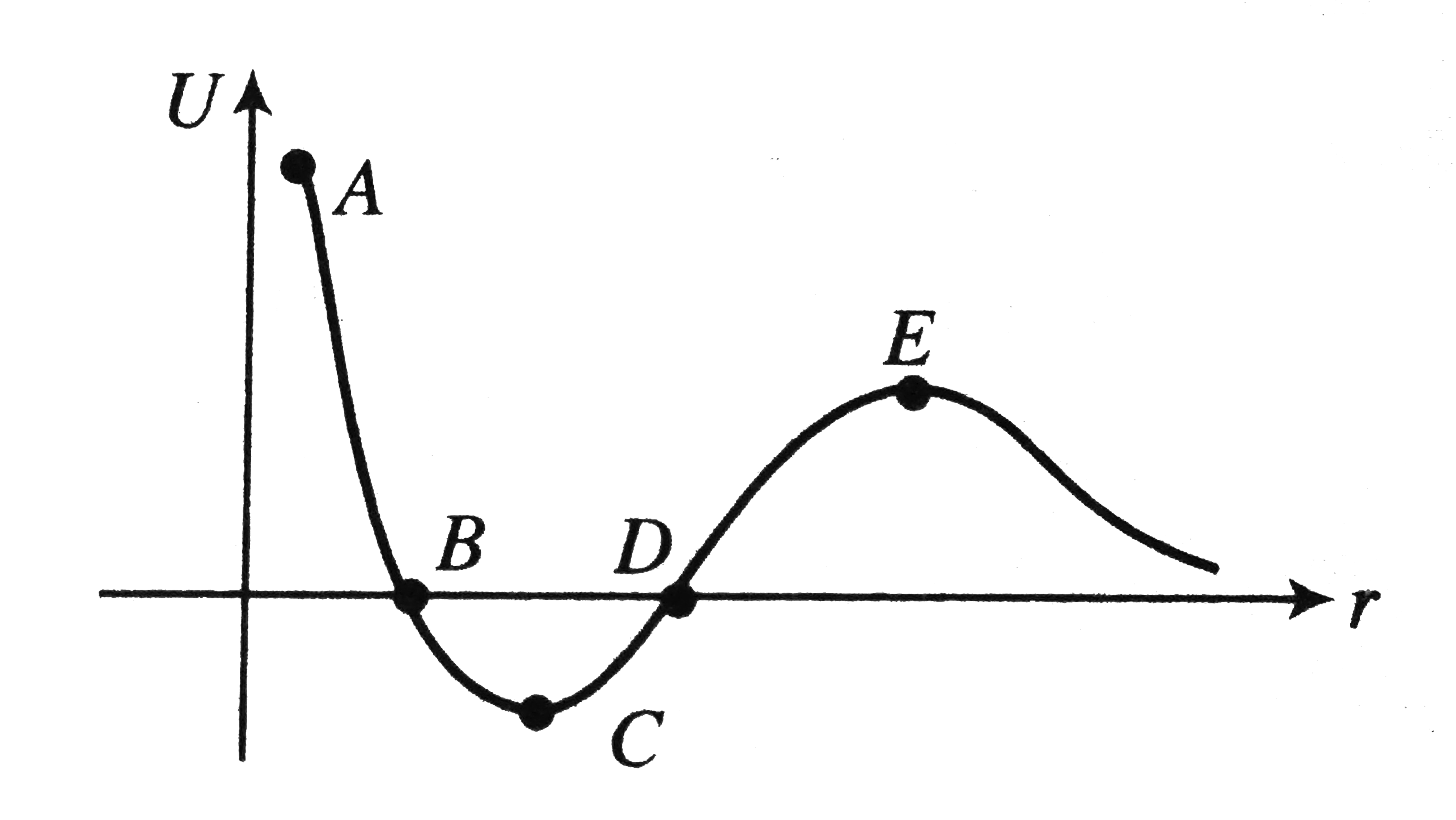
View SolutionA body of mass 5 kg is acted upon by a variable force.the force varies with the distance covered by the body. Find the kinetic energy of the body when the body has covered 30 m distance ? Assume that the body starts from rest.
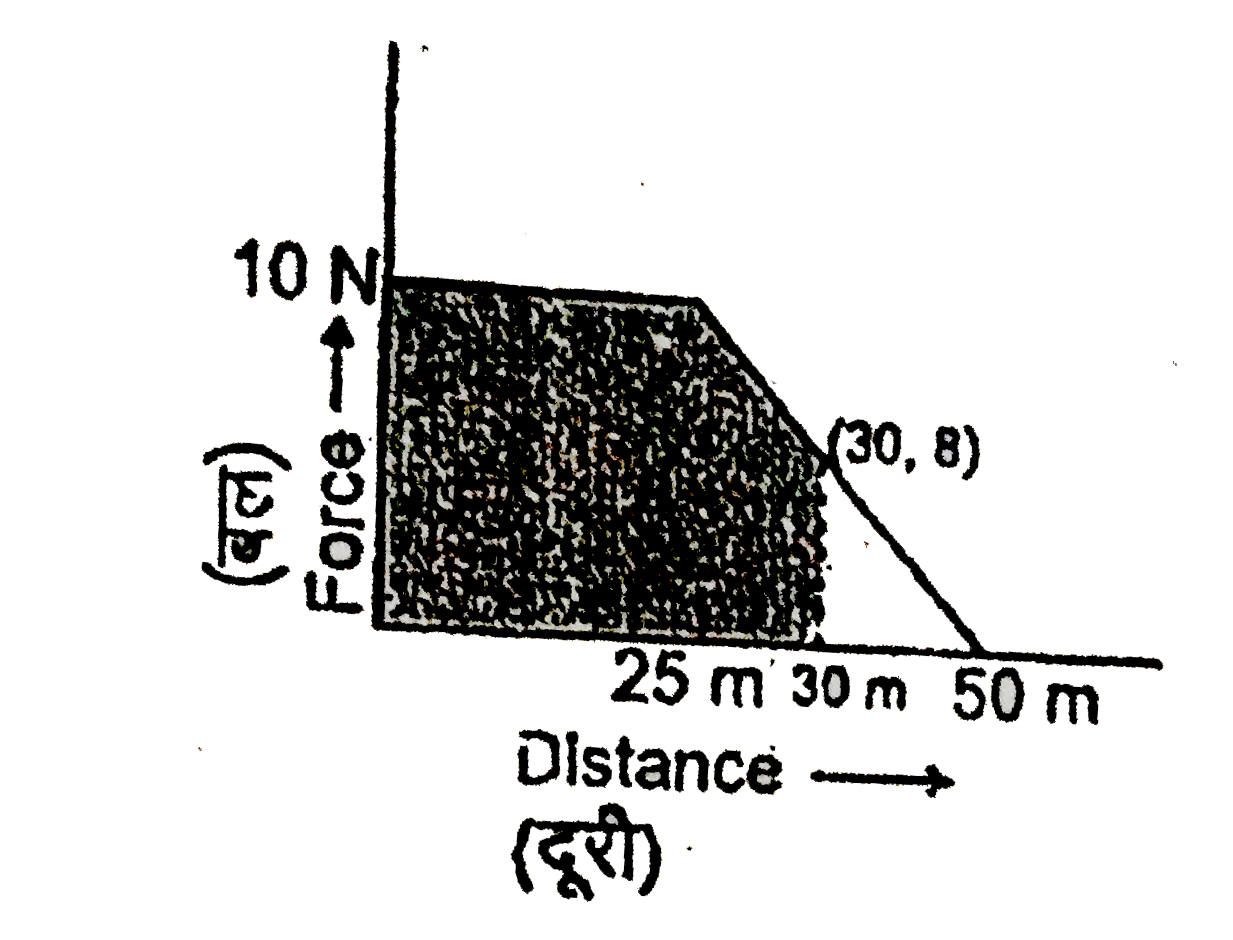
View SolutionAn elevatore weighinig 500kg is to be lifted up at a constant velocity of `0*4m//s`. What should be the minimum horse power of the motor to be used ?
View SolutionA car of mass `m` is driven with acceleration `a` along a straight level road against a constant external resistive force R. When the velocity of the car V, the rate at which the engine of the car is doing work will be
View SolutionThe potential energy of a system increase,if work is done
View SolutionStatement-1: A person walking on a horizontal road with a load on his head does no work on the load against gravity.
Statement-2: No work is said to be done, it directions of force and displacement of load are perpendicular to each other.
View SolutionStatement-1: Graph between potential energy of spring versus the extension or comparision of the spring is a straight line.
Statement-2: Potential energy of a stretched or compressed spring is proportional to square of extension or comparission.
View Solution
Exercise questions and complete solutions for chapter WORK POWER AND ENERGY of RESONANCE ENGLISH of Class 11